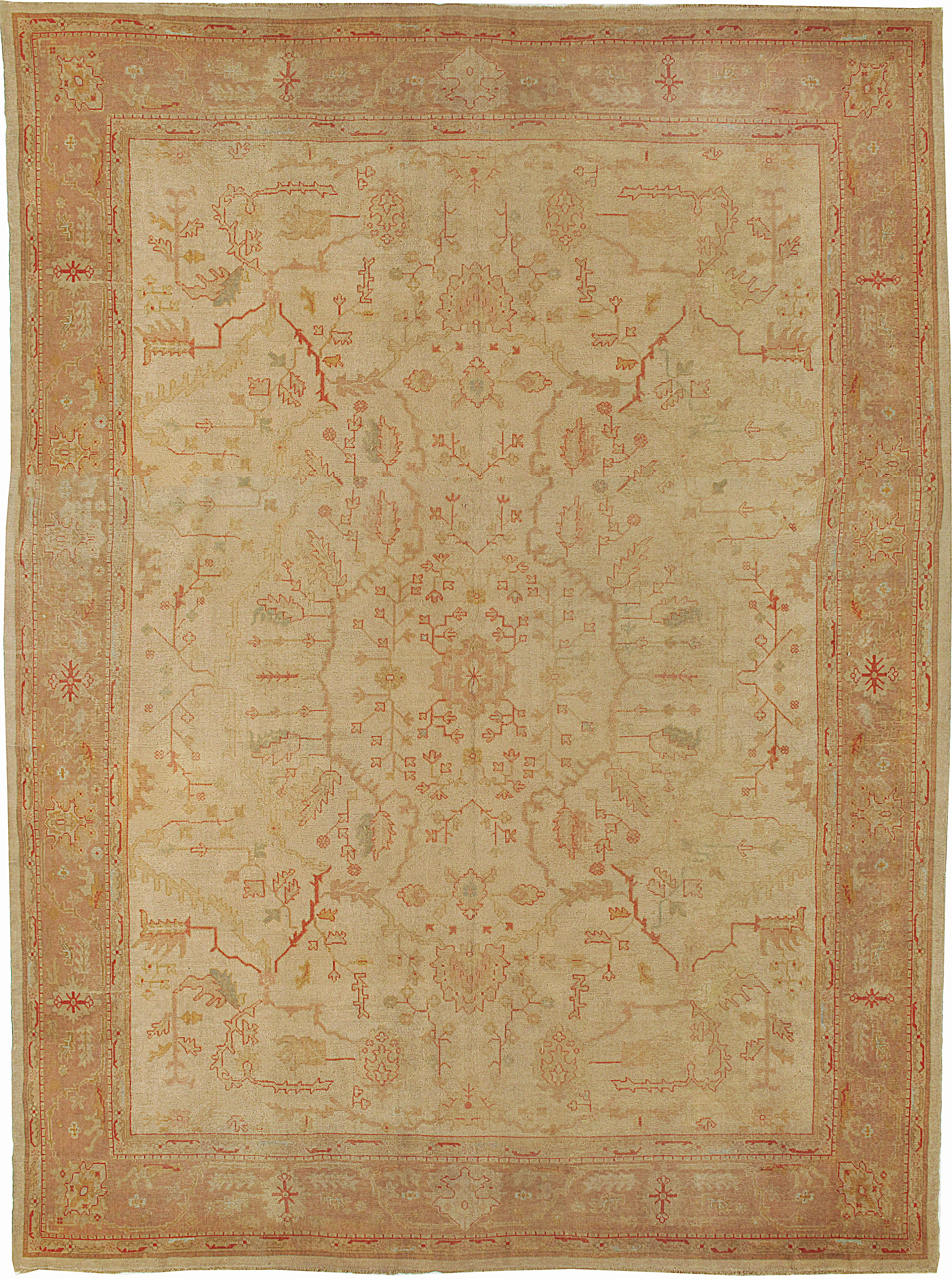
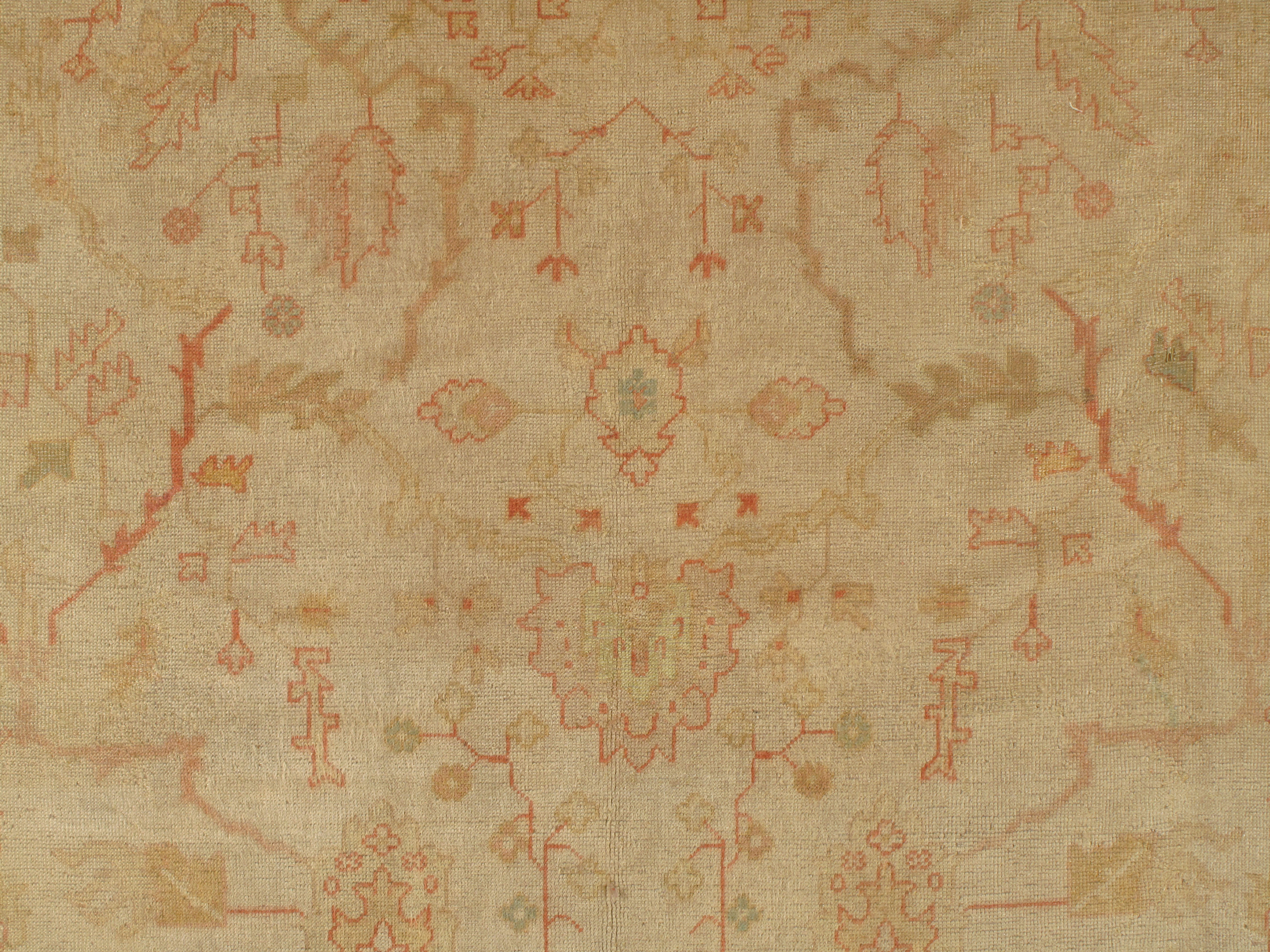
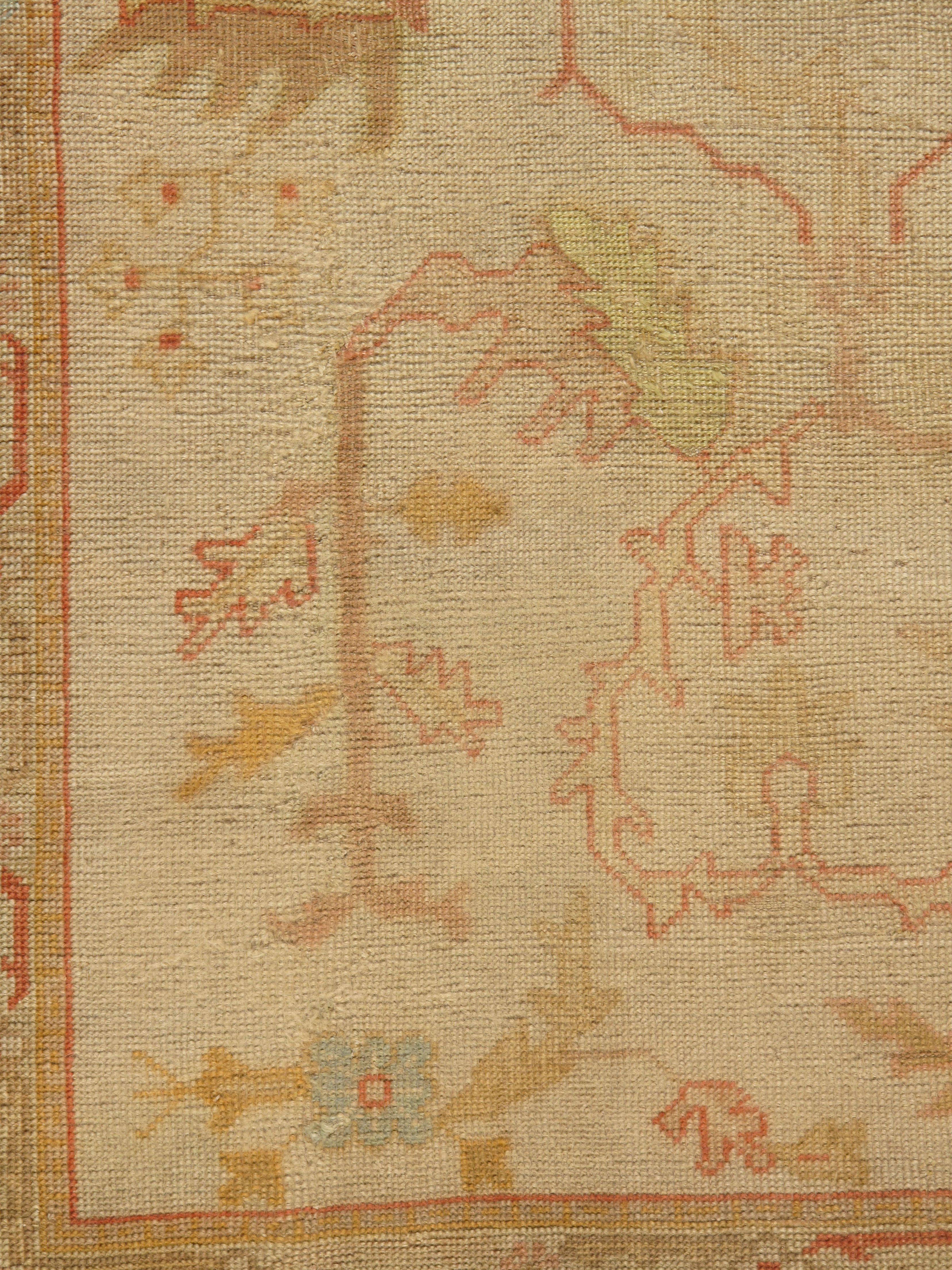
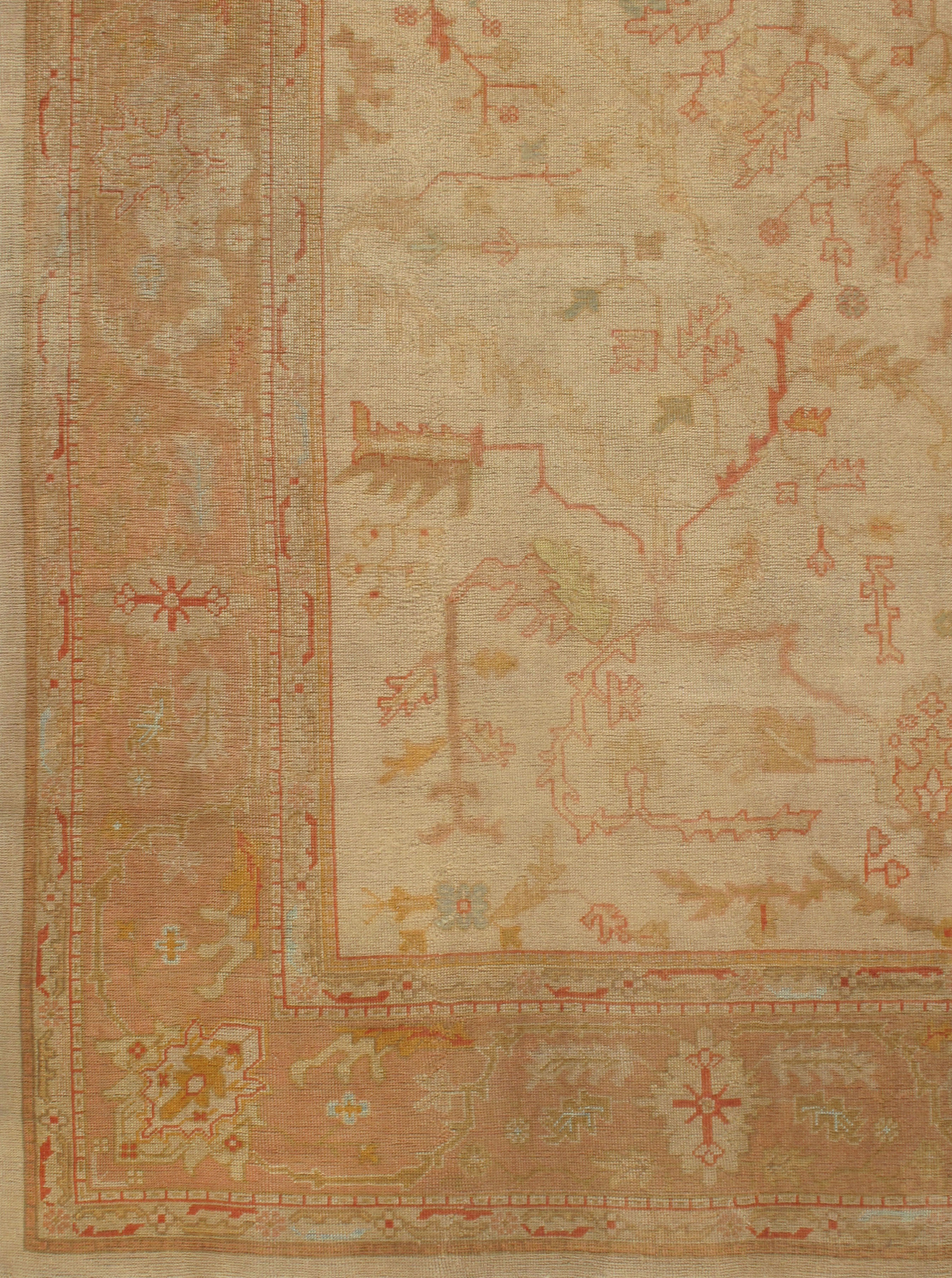
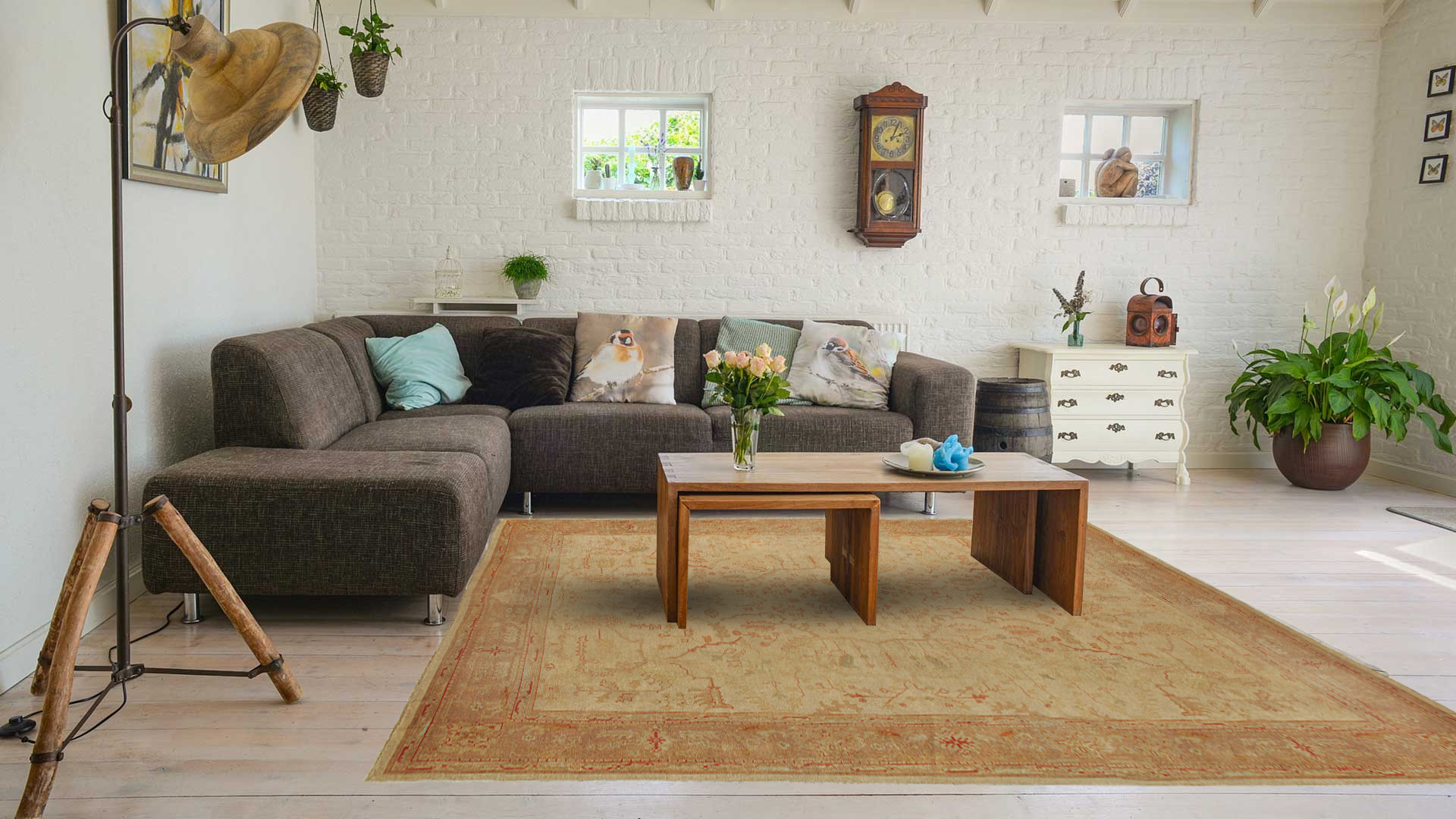
U-1163 - Antique Turkish Oushak Rug
11ft 06in X 14ft 06in
Circa: 1940
Oushak-Anatolian-Kars Rugs
Antique Turkish Oushak Rug 11'6 x 14'6. Antique Oushaks are known for their soft palettes combined with eccentric drawing. The relatively coarse weaves, here on a wool foundation, mean vinery and branches are bent and broken rather than flowing smoothly, and individual motives develop chunky outlines rather than precisely even edges. Coarseness is not a disadvantage. Just try executing such rough designs on a finely knotted carpet. The vigor is lost and there is an air of trying too hard, the city slicker imitating or parodying the country bumpkin. For a carpet that originally was aimed at the middle class, the range, imagination, and individuality of examples is noteworthy. Our example seems to be unique. The warm straw-ecru field features a ragged central balanced motif organizing bent and broken brown ragged brown twigs developing torn leaves, florets, and barbed foliage. The devices are outlined and filled with shades of brown, straw and khaki. The elements are generally quite small and there is plenty of field to give them freedom of movement. Two larger layered barbed palmettes accent the central vertical axis. The burnt salmon-buff main border shows assorted barbed leaves and loosely drawn palmettes. The knots are symmetric (Turkish) and the pile, originally long, has been evenly worn to best show off the design. The palette is naturally mellow. Like most antique Oushaks, this carpet works in almost any décor, from contempo to New England traditional to Georgian to whatever your fancy dictates.
Vacuum your rug frequently and use a vacuum which uses suction and does not have bristles. If possible, set vacuum to low power setting and vacuum the rug up and down and do not use a back-and-forth motion.
If possible, rotate the rug every few years to allow foot traffic to be spread evenly and shade the rug from direct sunlight to avoid fading in areas.
A rug pad is recommended on all surfaces to prevent slipping and stop marking if on floors with grooves or lines. Professional cleaning is recommended every two or three years.







